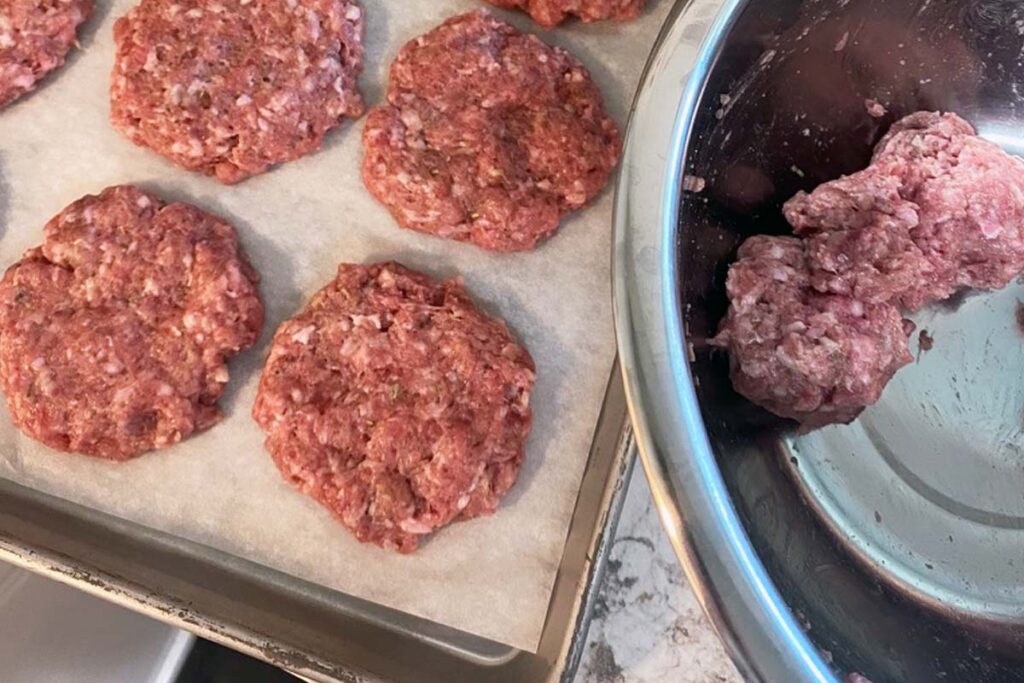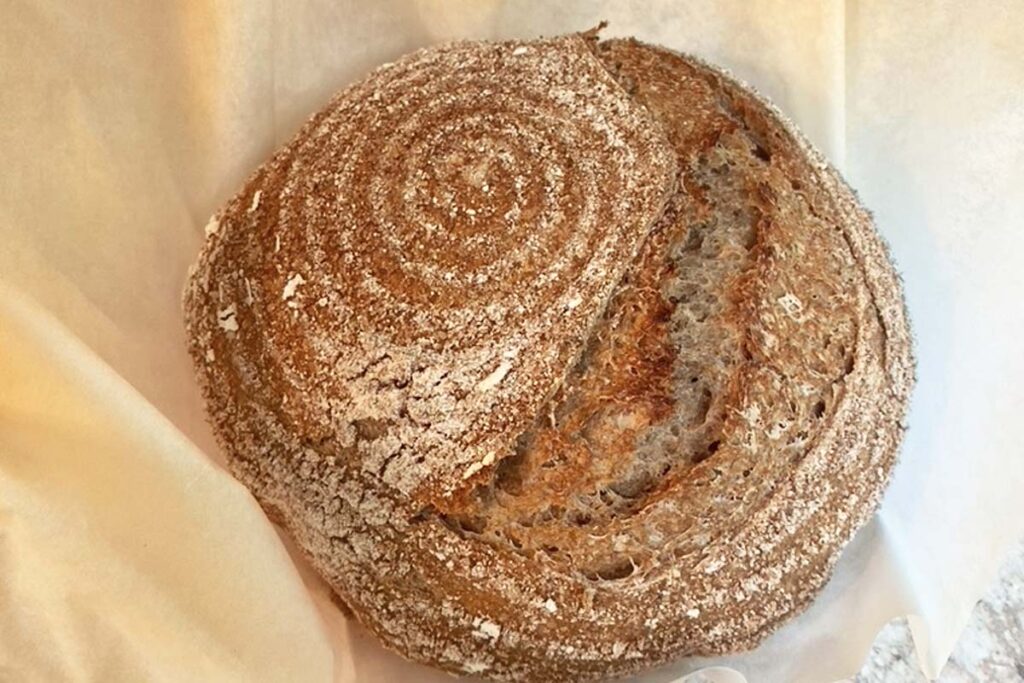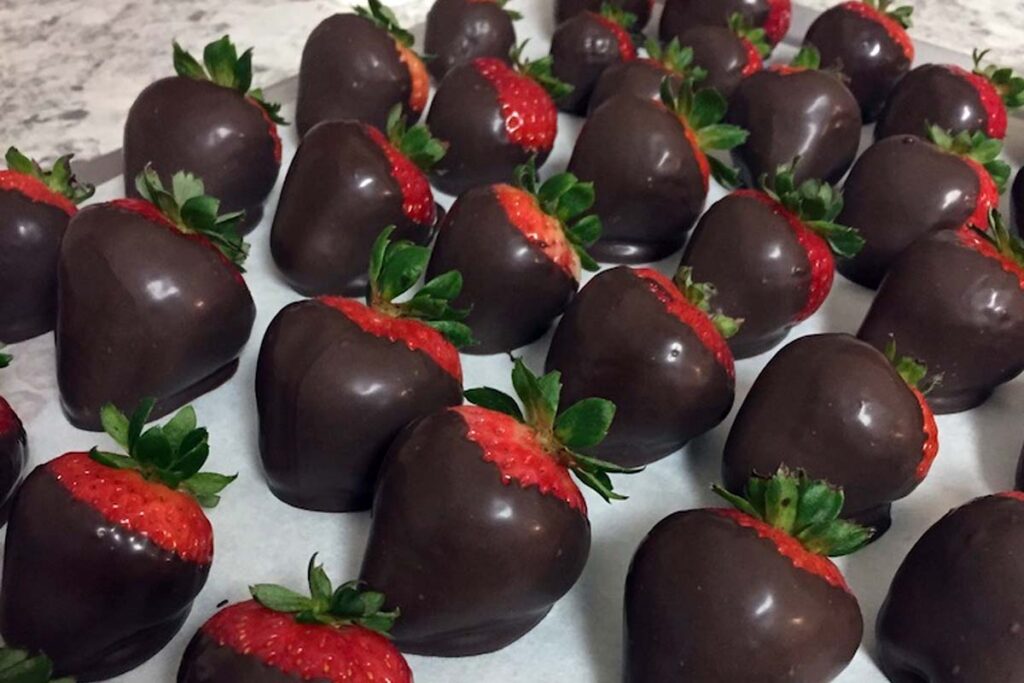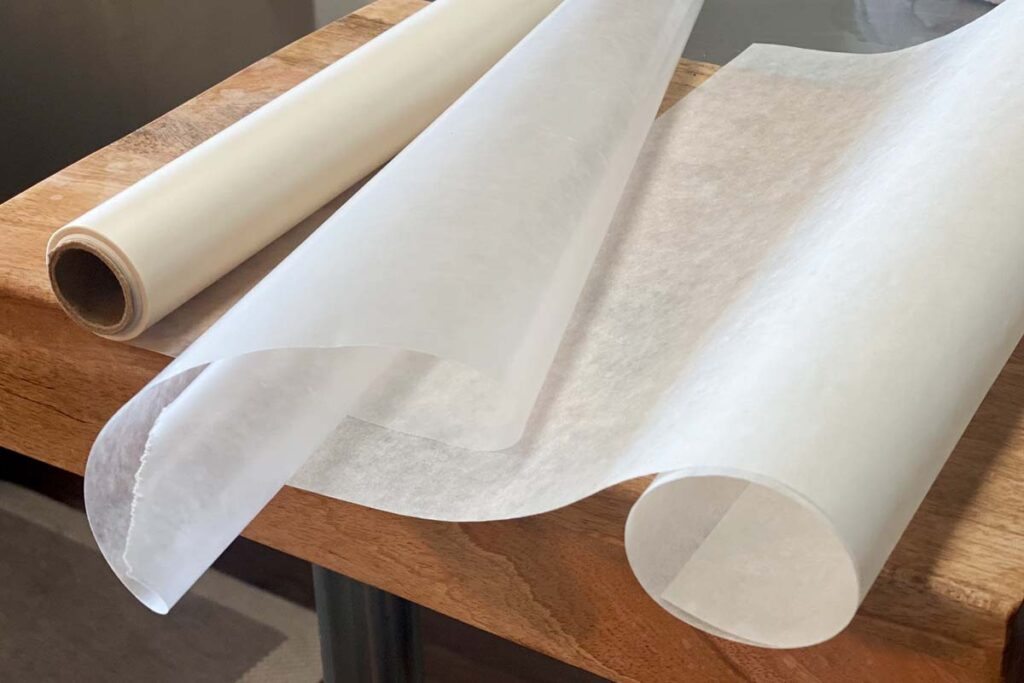Parchment paper and wax paper may look similar, but they have distinct differences that affect their uses in the kitchen. (And, it takes only one time of using wax paper in lieu of parchment paper in the oven to quickly understand that they are NOT the same. Just ask me how I know!)
The differences can be summed up this way: Parchment paper is good for baking and roasting while wax paper is ideal for room-temperature “non-cooking” tasks like wrapping food and food prep.
Key differences:
- Parchment paper: It’s a versatile, non-stick, and heat-resistant paper that’s coated with silicone, making it a popular choice for baking and roasting. Parchment paper allows for excellent heat distribution, which helps baked goods cook evenly and prevents sticking to the pan.
- Wax paper: It’s coated with a thin layer of wax, making it non-stick and moisture-resistant. However, it’s not heat-resistant and should not be used in the oven, as it could melt or catch fire.
In summary, knowing the difference between parchment paper versus wax paper is essential for any home cook or baker. Remember that parchment paper is ideal for baking and roasting, while wax paper is excellent for wrapping food for cold storage in the fridge or freezer. Each has its purpose, and using the correct one can make all the difference in the final outcome of your dishes.
Composition and basic structure
Parchment paper components
Parchment paper, or baking paper, is a cellulose-based composite made from either cotton fiber or pure chemical wood pulps. This paper is coated with a thin layer of silicone, which provides its non-stick and heat-resistant properties. As a result, it has become a standard material in baking and cooking applications that require heat resistance, such as lining pans and trays. Using parchment paper in my recipes has greatly improved the ease of removing baked goods from the pans without sticking or breaking.
Wax paper components
On the other hand, wax paper is manufactured by coating standard paper with food-grade paraffin wax. This coating makes the paper non-stick and moisture-resistant, but it does not have the same heat-resistant properties as parchment paper. In fact, even low heat can cause the wax to melt, which makes it unsuitable for lining pans or for baking purposes.
However, I find wax paper to be particularly useful for wrapping food that needs cold storage in the fridge or freezer, thanks to its moisture-resistant properties.
Intended uses for each paper
Parchment paper in baking, cooking, and food storage
My mom bought me pre-cut parchment paper sheets years ago and it sat in my pantry. But once I started using it, I have found that parchment paper is indispensable in the kitchen. I use it to:
- Line baking sheets: Its nonstick surface is perfect for lining baking sheets and pans, making it easy to remove cookies, brownies, and cakes without sticking.
- Easily lift my sourdough bread: I bake my sourdough in a 450 degree dutch oven and found lining it with parchment paper easy as I can just grab the paper instead of trying to manhandle a piping hot loaf of bread
- Separating wet meats: If I’m creating a large batch of sausage patties or hamburger patties, I can use parchment paper to make “layers” on cookie sheets to flash freeze them. These wetter meats will cause wax paper to freeze and “stick” to the meat whereas parchment paper doesn’t. After a few hours in the freezer, I can pull the patties out and store them in freezer bags with no stickage

Additionally, I use it as a barrier to prevent food from sticking to the surface when storing it in the refrigerator or freezer. This makes handling and separating leftovers far easier.
Wax paper applications
On the other hand, I use wax paper for a variety of non-heat applications. It is moisture-resistant and much cheaper than parchment paper. I find it ideal for:
- Wrapping food: Wax paper is perfect for wrapping sandwiches, cheese, and cold cuts for storage or transportation.
- Protecting surfaces: I lay wax paper under my cutting board or rolling pin to protect countertops from spills and messes.
- Room-temperature “cooking” tasks: I love dipping almost-moldy fruit in chocolate as a way to use it yup before it goes bad. Lay wax paper on your countertop and put the drippy chocolate-covered fruit on the wax paper to harden. This also works well for any “no-bake” cookie recipe.
- Food presentation: At times, I use wax paper as a visually appealing surface for charcuterie boards, separating gooey treats, and other hostess-type things.
Heat resistance and safety
Parchment paper resistance
In my experience, parchment paper is designed to be heat-resistant and nonstick. It can typically withstand temperatures of up to 450 degrees F. This makes it ideal for high heat cooking activities, such as baking and roasting. Parchment paper is available in both bleached and unbleached forms and can be found in rolls or pre-cut sheets.

When using parchment paper, I appreciate that it is not only safe for oven use but is also compostable. Additionally, if the paper is not damaged during the cooking process, it can be reused.
An example of this is baking cookies. If you line a cookie sheet with parchment paper, keep reusing the same sheet for each batch, even if it starts to brown.
Wax paper limitations
On the other hand, wax paper is coated with food-safe wax, making it less suitable for high heat applications. If exposed to high temperatures, the wax can melt, potentially causing a fire or contaminating food with melted wax.
Think of wax paper best used to provide a barrier to moisture and air, which can help keep food fresh, but that’s it.
Price comparison
Wax paper is generally more affordable than parchment paper as you can get an entire roll at the grocery store for less than $2.00 for 75 feet.
Compare this with parchment paper which for me here in Texas, buying the store brand, is almost $3.00 for only 25 feet.

Despite the higher price of parchment paper, I find that it offers excellent value due to its versatility in the kitchen. Parchment paper is not only nonstick and moisture-resistant, but it’s also safe for use in the oven, which makes it suitable for a wide range of applications in cooking and baking.
I keep a roll of each in my kitchen, but I find that I use parchment paper WAY more often.
Environmental factors
Parchment paper production
Parchment paper, or baking paper, is a cellulose-based composite with a silicone coating standard for baking. The production process involves treating unbleached or bleached wood pulp with acids or alkalis to make it more liquid. The liquid is then spread onto a conveyor belt, where it solidifies into paper. The paper is then coated with silicone to make it non-stick and heat-resistant. This process uses energy and resources, but the final product is both useful and sustainable.
Wax paper production
Wax paper, on the other hand, is made by coating paper with food-grade paraffin wax. Wax paper was introduced in the 1950s and has been a staple in kitchens for wrapping food for cold storage in the fridge or freezer.
There are a few different types of wax paper available, and some are more environmentally friendly than others. For example, all grades of wax paper are biodegradable, but beeswax and soybean wax paper are more environmentally friendly and better for composting.
In terms of production, wax paper uses resources like paper and paraffin wax, which is derived from petroleum, a non-renewable resource.
Side-by-side comparison between wax paper and parchment paper
Sometimes a chart is so much easier! So if you need help deciding which is best for you, here is a handy chart comparing the two types of kitchen paper.
| Features | Wax Paper | Parchment Paper |
|---|---|---|
| Composition | Paper coated with a thin layer of wax | Silicone-coated paper |
| Heat resistance | Not heat-resistant; can melt or ignite in the oven | Heat-resistant; safe for oven use |
| Usage | Used for wrapping foods, lining trays for no-bake recipes, and covering countertops during messy tasks | Used for baking, roasting, and cooking in the oven |
| Non-stick | No | Yes |
| Reusability | Single-use | Can be reused multiple times, depending on the specific task, like baking cookies in the oven |
| Cost | Generally cheaper | Slightly more expensive than wax paper |
Frequently asked questions
Can you use wax paper in the oven?
No, I wouldn’t recommend using wax paper in the oven, as it has a thin coating of wax on both sides that can melt and catch fire at high temperatures. Wax paper is best for baking tasks that don’t require heat, like rolling out dough.
What are the main uses of parchment paper?
Parchment paper is a versatile baking tool that is non-stick, heat, and moisture resistant. Some common uses for parchment paper include lining baking sheets, cake pans, and pie dishes, which helps prevent sticking and makes for easy cleanup. I also use parchment paper to make pulling my sourdough bread out of the dutch oven much easier.
Parchment paper can also be used to create piping bags for icing, separating layers of food in storage, and wrapping food.
Is parchment paper safer than wax paper for baking?
Yes, parchment paper is designed to withstand high temperatures (up to 450 degrees F), whereas wax paper can melt or catch fire in the oven.
Can parchment paper be substituted for wax paper?
Yes, you can substitute parchment paper for wax paper, just not the other way around.
Parchment paper vs. aluminum foil: which is better for baking?
Both parchment paper and aluminum foil can be used for baking, but parchment paper is non-stick and heat resistant, making it more suitable for recipes where sticking could be an issue. Aluminum foil is typically used to cover foods while baking, helping to retain moisture and reduce the risk of burning.
What are the pros and cons of using wax paper compared to parchment paper?
Wax paper is non-stick, affordable, and effective when used for tasks that don’t require heat, like storing foods in the refrigerator or rolling out dough. Its downsides are that it can’t be used in the oven due to its heat intolerance and potential fire hazard.
In comparison, parchment paper is non-stick, heat and moisture resistant, and can be used in the oven. However, it’s typically more expensive than wax paper and may not be necessary for tasks that don’t require heat.








